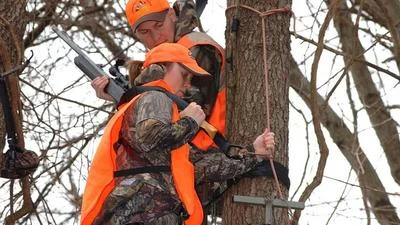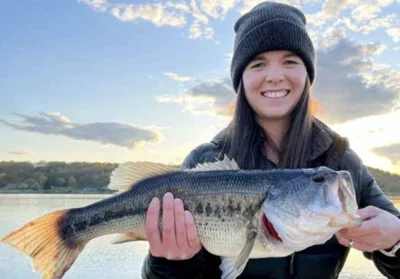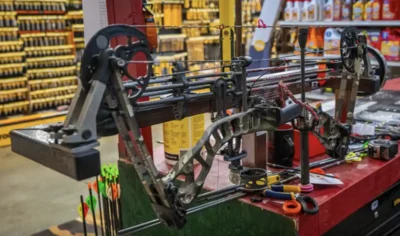As hunters across Ohio prepare for gun season, compliance with blaze orange attire to ensure safety and visibility in the field remains a key aspect of their readiness.
Ohio hunting regulations legally require the wearing of hunter orange during specific seasons, including youth deer gun season, deer gun seasons and deer muzzleloader season.
This emphasis on blaze orange attire serves as a precautionary measure to prevent accidental encounters or confusion during hunting.
Hunting any wild animal, except waterfowl, from 30 minutes before sunrise to 30 minutes after sunset without visibly wearing blaze orange is considered unlawful.
This statewide requirement applies to hunters on both public and private land, emphasizing the importance of visibility and safety during designated hunting periods.
Vanessa Eddington, a seasoned sales professional at Danville Outdoors, sheds light on the mandatory attire for hunters during this season.
According to Eddington, the primary requirement is wearing blaze orange to maximize visibility.
“Just a standard orange vest so other hunters can see you,” Eddington told the Mount Vernon News.
“A lot of people recommend wearing a hat as well just because the top of your head is what people are most likely to see. I think the only requirement is the blaze orange.”
Safety in the field is paramount, prompting a crucial step towards obtaining a hunting license in Ohio—completing a free hunter education course.
Comprehensive courses cover firearms, archery, outdoor safety, wildlife management and conservation.
Hunters can choose between instructor-led learning and home-study courses to fulfill license requirements, promoting responsible and informed hunting practices in Ohio.
Potential hunting locations include wildlife areas, private properties and controlled hunt opportunities.
Understanding proper shot placement with your gun is crucial for ethical hunting.
“If you're not careful, there is, especially on public land, when there's a lot of people in a crowded area it is easy to get caught up when you see a big buck,” Eddington said.
As far as ensuring a successful hunt, identifying suitable habitats with cover and nearby food sources such as acorns, crop fields and browse areas is crucial. Detecting deer signs like scat, tracks, bedding areas, rubs, scrapes, and utilizing trail cameras can enhance the chances of a successful hunt.
Hunters are encouraged to focus on travel corridors between bedding and feeding areas for optimal results.
Before embarking on the hunt, it is advisable to scout using satellite imagery, obtain written permission for private property, practice with the preferred hunting implement and ensure the purchase of a hunting license and deer permit.







